Shipla Gupta
Shilpa Gupta is an artist from Mumbai, India. Gupta uses a range of mediums from manipulated found objects to video. She often responds to the topic of human perception and how information is received and internalised everyday. Gupta looks at how objects, places, people get defined and her work links to these where definitions like labels are used. She also responds to issues in India which include gender and class barriers and religious differences.
Gupta’s works relate to the highly mediated act of seeing, retrieving and remembering trying to get the viewer to see something different or get them to question what they are looking at.
Examples of her work:

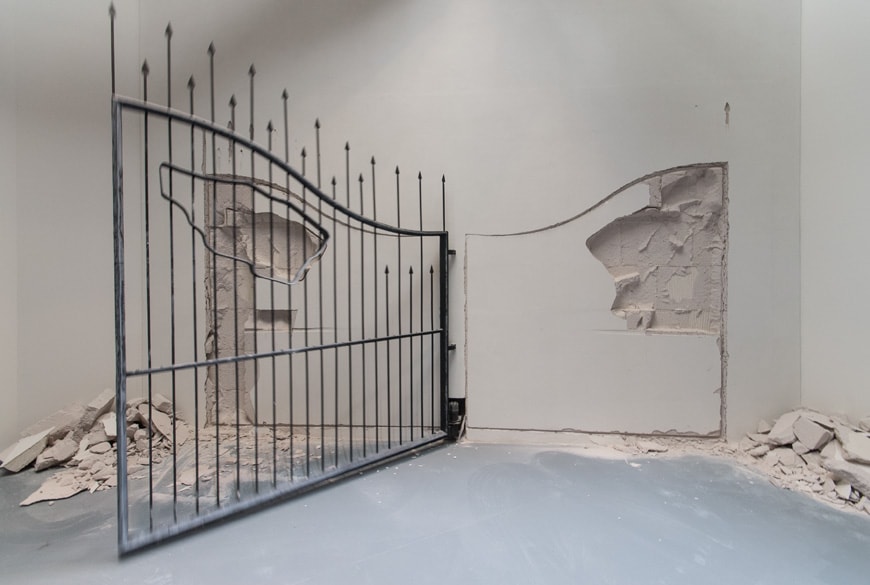


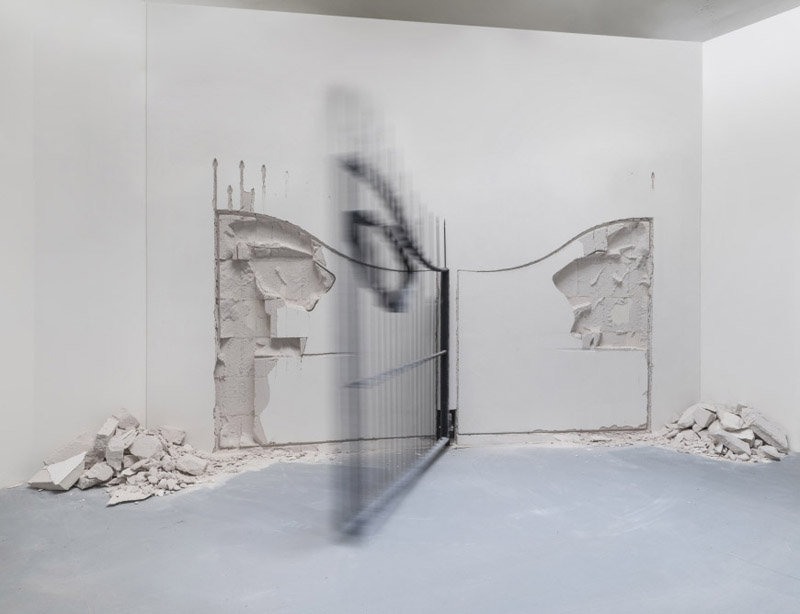

Altered Inheritances- 100 (Last Name) Stories

This exhibition is about how people from South Asia are treated in the Gulf. Gupta traced individual people who changed their names for survival or to succeed. The images also include the reasons behind why the names were shed. The splitting of images is showing a sharp break from the past. The words on each are “triggers for memory” in Zarina’s Home is a Foreign Place (1999), about a longing for a home she could not return to. The architecture in the exhibition is inspired by the floor plan of her childhood home. The exhibition also has a video of Zarina remembering leaving the house after the Partition in 1947 made by Sophie Ernst.
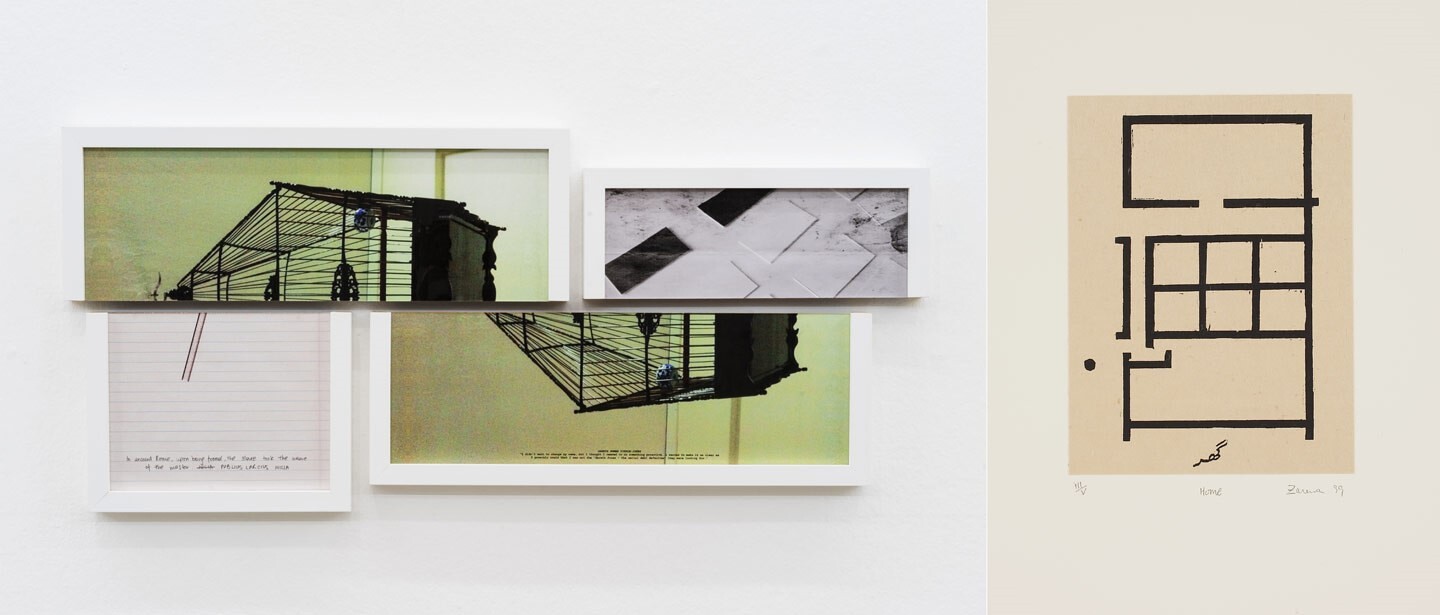
I really like the way that she splits her images in half and the presentation being misaligned, I would like to include this in my own work.
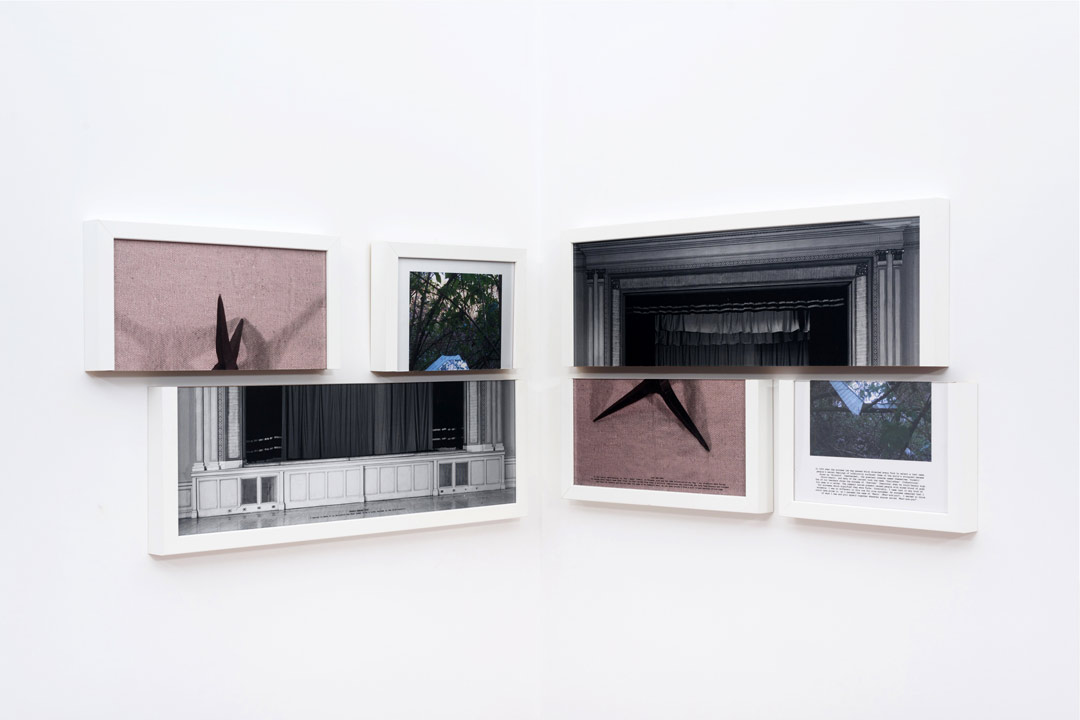
The images are also interesting, they have a sense of personality and Identity to each one whether it is an object, landscape or portrait photo. I would also like to take inspiration from these when taking my own photos.
Image Analysis
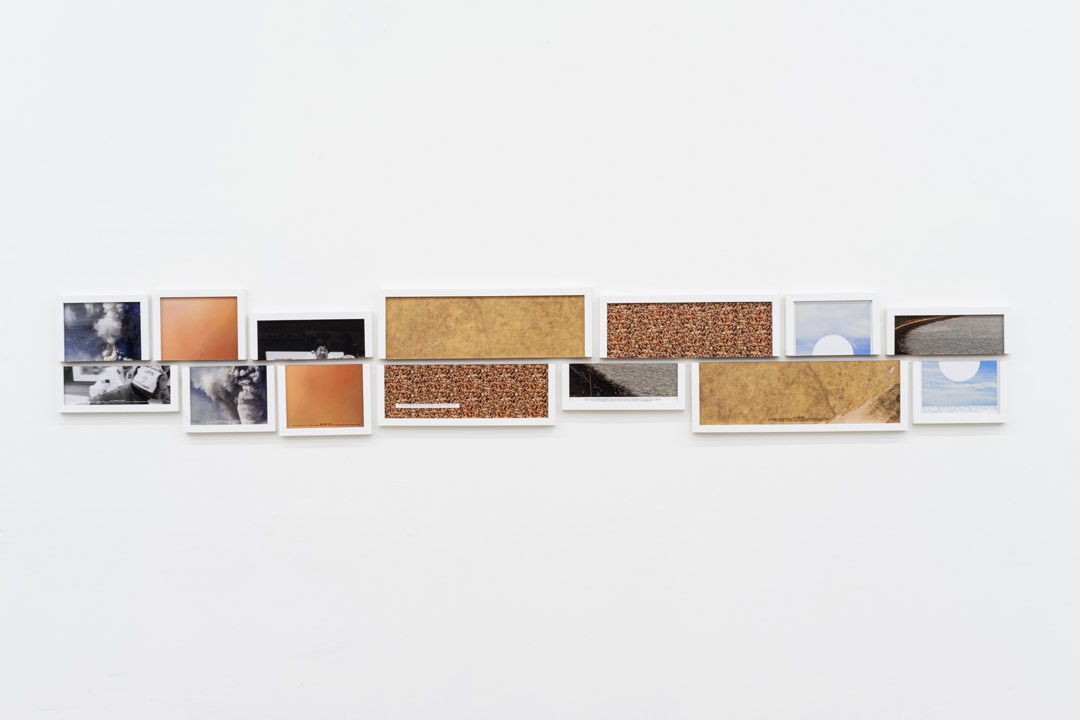
Key Themes – Shipla Gupta’s work is inspired by the issues with how south Asians are treated in the gulf and how they survived by changing their names, essentially changing their identity.
Content – Seven split images including pictures of surfaces, landscapes and one portrait image.
For the image analysis I will be focusing on the half-image at the end of the sequence, the picture of the sky, with the quote, ‘When he was getting married, he wanted him and his wife to have the same name, but felt it was unfair to ask her to take his surname. So they both changed their surnames to something new‘ hand written under the image.
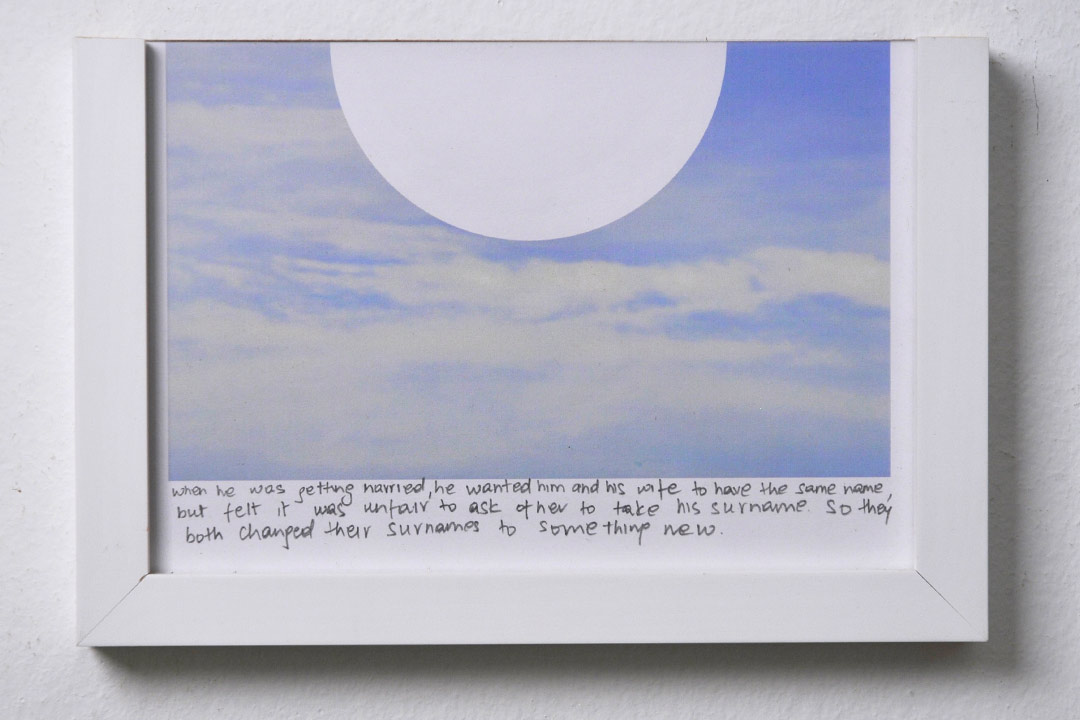
Formal Elements – The image is quite monochrome and only has two colours, being white and blue. There is not much tonal range in the image creating a low contrasting image which is very soft in colour. The image is taken from eye-level, in level with the horizon capturing the whole sky as the sole image. The natural daylight from the sky adds to the soft, bright atmosphere to the image, this could be a metaphor as it is the end of the sequence so could symbolise a happy ending. Gupta has added a white geometric circle into the centre of the very organic image creating a contrast between them. In context to the quote under the image the blank circle could suggest an empty space or new beginning.
Mood – The image creates a sense of peace and calm as the colours and clouds are soft. Gupta could be trying to link the happy ending or to heaven where everything is pure and tranquil.
